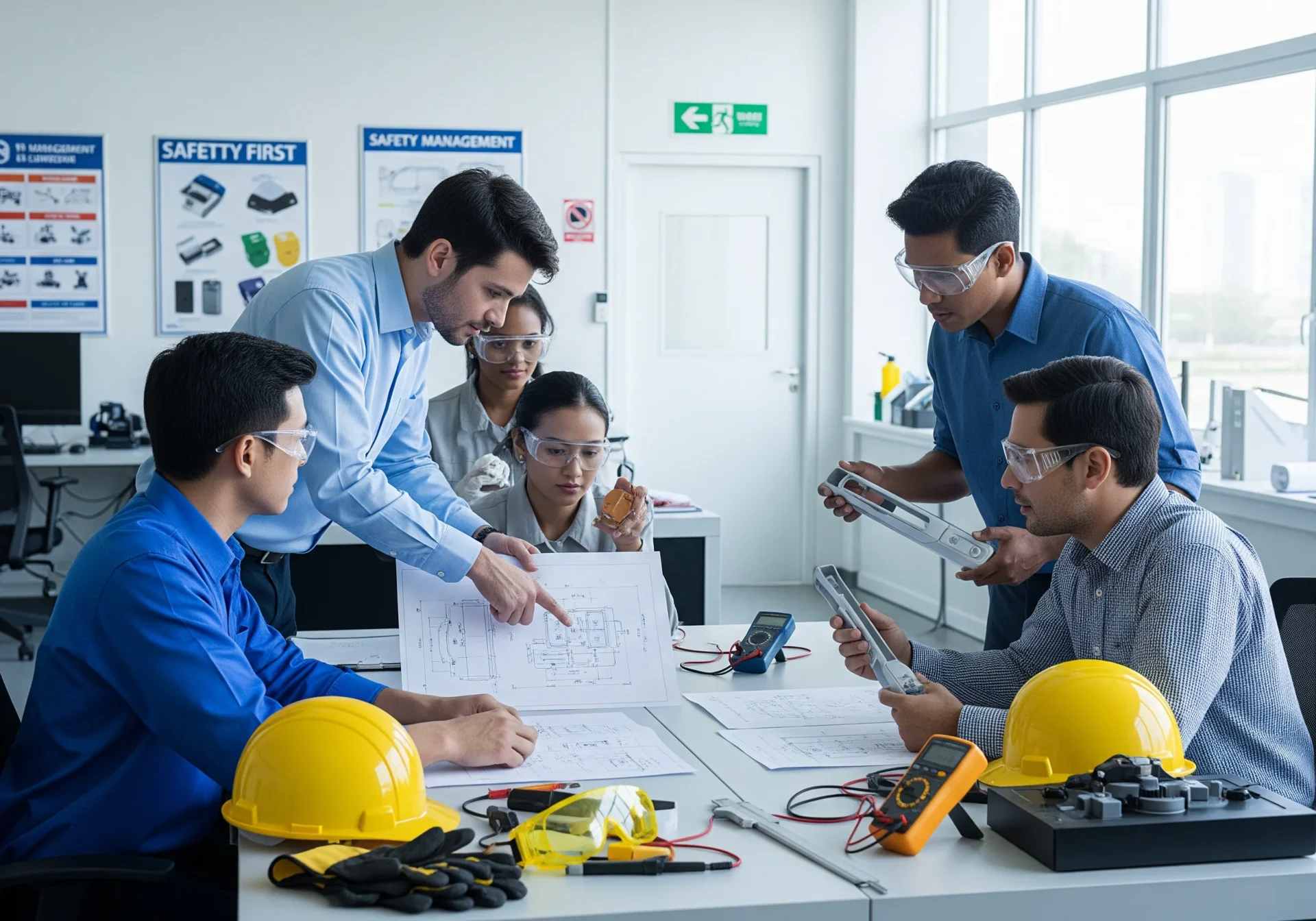Introduction
In product development, safety is one of the most important fundamental principles, alongside performance and design. Ensuring safety should not be merely about regulatory compliance or formal checks, but should be advanced as a comprehensive and systematic process that combines risk reduction measures and ergonomic considerations from the planning stage. It is particularly important to incorporate perspectives such as “product safety measures,” “risk management,” “ergonomic design,” and “failsafe examples” from the initial stages and reflect them in the design philosophy. Such efforts are directly linked to preventing accidents before they happen. They also secure consumer peace of mind and trust, while simultaneously forming the foundation for maintaining and enhancing the manufacturer’s brand value and market competitiveness over the long term.
Risk Reduction in the Planning, Development, and Design Stages
The core of product safety measures lies in comprehensively identifying potential hazards during the planning, development, and design stages and implementing countermeasures at an early phase. If defects and risk factors are eliminated during design, the likelihood of serious defects or accidents occurring in the subsequent manufacturing process is significantly reduced. This includes not only technical evaluations but also analysis of past accident cases and surveys of actual market usage. Particularly when adopting new technologies or materials, more cautious verification is required as risks not previously anticipated may be latent.
Key Initiatives
- Compliance with relevant laws, regulations, and safety standards (as a minimum requirement) and periodic review of standards.
- Hazard analysis (assuming scenarios for accident types, degree of damage, and frequency of occurrence).
- Safety evaluation that includes unexpected misuse patterns and use under harsh environmental conditions.
- Design that considers the identification of critical safety components, ensuring long-term durability, and ease of replacement.
Source: Product Safety Measures (PS) – Planning, Development, Design | Asahi Chuo Comprehensive Law Office
Utilization of Ergonomics
Ergonomics is the study of pursuing compatibility between products and their users, and it forms the basis for improving safety. This is not just about improving operability; it is an approach that reflects a comprehensive perspective in design, including the user’s physical characteristics, cognitive abilities, habits, and cultural background. For example, the shape and placement of controls require a design that corresponds to hand size and force, and displays and indicators must use languages, colors, and symbols that are easily understood by anyone. It is also important to assume a diverse range of users, such as the elderly and people with disabilities, and to equip products with guard mechanisms and feedback functions to prevent misoperation. Such considerations not only enhance product safety but also lead directly to improved user satisfaction and reliability.
Source: Product Safety Measures (PS) – Planning, Development, Design | Asahi Chuo Comprehensive Law Office
Safety Devices and Failsafe Design
If a hazard analysis concludes that risks cannot be completely eliminated, safety devices and failsafe mechanisms are actively incorporated. This is a design philosophy that functions as a “last line of defense” to minimize damage even when an abnormality or failure occurs. Safety devices are not limited to physical ones; they also include software-based controls and warning systems. Failsafe refers to an operation that “fails to a safe state,” ensuring the safety of the user and the surroundings through functional shutdown or operational limitation. At the design stage, the addition of redundancy and self-diagnostic functions to ensure these mechanisms operate reliably is also considered.
Specific Examples
- A motor that automatically stops during an overload.
- A temperature sensor to prevent overheating.
- An emergency stop switch.
- Control software that cuts off output when a sensor malfunctions.
- A safety interlock that stops operation when a door is opened.
Source: Product Safety Measures (PS) – Planning, Development, Design | Asahi Chuo Comprehensive Law Office
Responding to Long-Term Use and Unexpected Events
Ideally, safety should be maintained not only at the time of shipment but also after long-term use and under abnormal environmental conditions. It is necessary to predict performance degradation due to factors such as aging, wear, corrosion, and the effects of heat and humidity on components throughout the product’s service life, and to implement countermeasures from the design stage. Furthermore, since modifications by users and unexpected usage environments can also be risk factors, it is required to clearly state the conditions of use, provide maintenance methods, and establish a system for periodic inspections and recall responses. Additionally, to prepare for unpredictable external factors such as disasters and abnormal weather, it is important to incorporate mechanisms that ensure the product operates in a safe manner.
Source: Product Safety Theory | Faculty of Societal Safety Sciences, Kansai University
Information Dissemination and Education
The National Institute of Technology and Evaluation (NITE) collects, analyzes, and disseminates product accident information to promote recurrence prevention and the spread of safe design. Its activities are wide-ranging, including detailed cause analysis of accidents, provision of statistical data, and dissemination of recall information for public awareness. By actively utilizing this primary information, companies can quickly and effectively implement risk reduction measures in the design and improvement of their own products. Furthermore, by incorporating this into employee training and user awareness activities, it contributes to fostering a product safety culture and ensuring long-term trust.
Source: National Institute of Technology and Evaluation (NITE)
Conclusion
Safety-first product development is not limited to mere legal compliance or accident prevention measures; it refers to a comprehensive design process that integrates ergonomic perspectives with systematic risk analysis. This enables the creation of products that reliably protect users even in unexpected usage environments or during sudden events, leading to the establishment of long-term, sustainable brand trust.

